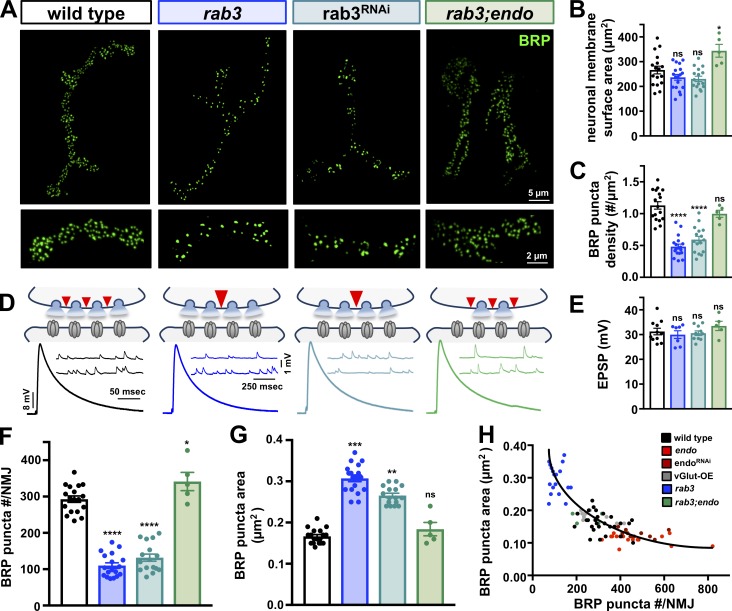Figure 3.
Increased AZ size but reduced number and density at rab3 mutant NMJs. (A) Representative NMJs immunostained with anti-BRP and insets below showing individual boutons from the same NMJ in wild-type, rab3 mutants (w;rab3rup), neuronal knockdown of rab3 (rab3RNAi: c155-Gal4;+;UAS-rab3-RNAi/+), and rab3;endo double mutants (w;rab3rup;endo1/endoΔ4). (B) No change in neuronal membrane surface area is observed in rab3 mutants and rab3RNAi, while a small but significant increase is found in rab3;endo double mutants. (C) BRP puncta density is significantly reduced in rab3 and rab3RNAi but is unchanged in rab3;endo double mutants. (D) Schematic and representative traces of AZ size, density, and neurotransmitter release at NMJs of the indicated genotypes, with no significant difference in EPSP amplitude observed (E). (F and G) rab3 mutants and rab3RNAi show a significant reduction in the total number of BRP puncta per NMJ (F), but exhibit an increase in the area of individual BRP puncta (G); these values are similar to wild type in rab3;endo. (H) A homeostatic tuning is observed where BRP puncta area scales with total BRP puncta number per NMJ in all genotypes. The black curve represents ideal homeostatic tuning with a goodness of fit R2 value of 0.729. Error bars indicate ± SEM (n ≥ 5; one-way ANOVA; Table S1). *, P < 0.05; **, P < 0.01; ***, P < 0.001; ****, P < 0.0001; ns, not significant.

